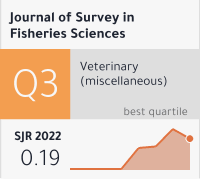Characterization Of Silver Nanoparticles Using Aqueous Leaf Extract Of Murrayakoenigii And Its Antioxidant Potential
DOI:
https://doi.org/10.53555/sfs.v10i6.2319Keywords:
DPPH radical scavenging activity, antioxidant activity, silver nanoparticles, and free radicalsAbstract
The use of microbes, enzymes, or plant extracts in biological methods to synthesize nanoparticles has been proposed as a potentially environmentally acceptable substitute for chemical and physical procedures that need the use of hazardous reducing agents. In the current study, MurrayaKoenigii leaf extract was used to create silver nanoparticles (AgNPs) using a green method. Fourier Transform Infrared (FTIR), UV-visible (UV-vis), and scanning electron microscopy (SEM) were used to analyze the produced AgNPs. The total phenolic content (TPC) of the produced AgNPs, the total reductive potential, and the DPPH radical scavenging experiment were used to assess the antioxidant activity. The produced silver nanoparticles had a size range of 50–70 nm and a maximum UV–vis absorbance of 480 nm, according to SEM examination. The synthesized AgNPs exhibited a dose-dependent increase in DPPH radical scavenging activity, reducing power, and total phenolic and total flavonoid contents when compared to the standard reference, ascorbic acid. This outcome demonstrated that MurrayaKoenigii is a promising biomaterial with the ability to synthesize AgNPs and be used for their antioxidant properties.









